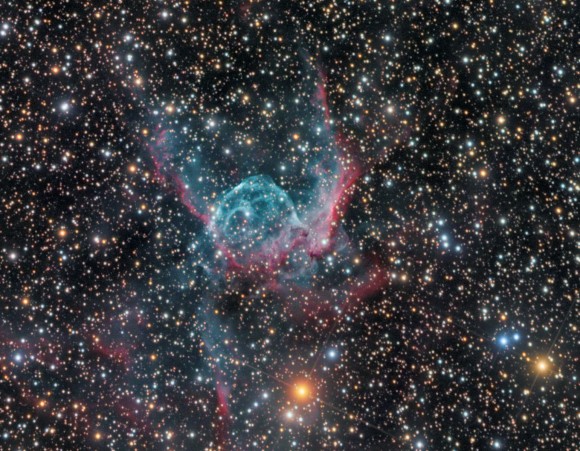by Ken Kremer on January 25, 2013
![721593main_pia16711-43_1024-768[1]](https://ut-images.s3.amazonaws.com/wp-content/uploads/2013/01/721593main_pia16711-43_1024-7681-580x435.jpg) Image caption: This image of a Martian rock illuminated by white-light LEDs (light emitting diodes) is part of the first set of nighttime images taken by the Mars Hand Lens Imager (MAHLI) camera at the end of the robotic arm of NASA’s Mars rover Curiosity. The image was taken on Jan. 22, 2013, after dark on Sol 165. It covers an area about 1.3 inches by 1 inch (3.4 by 2.5 centimeters). Credit: NASA/JPL-Caltech/MSSSCuriosity’s high resolution robotic arm camera has just snapped the 1st set of night time images of a Martian rock of the now 5 1/2 month long mission – using illumination from ultraviolet and white light emitting LED’s. See the images above and below.
Image caption: This image of a Martian rock illuminated by white-light LEDs (light emitting diodes) is part of the first set of nighttime images taken by the Mars Hand Lens Imager (MAHLI) camera at the end of the robotic arm of NASA’s Mars rover Curiosity. The image was taken on Jan. 22, 2013, after dark on Sol 165. It covers an area about 1.3 inches by 1 inch (3.4 by 2.5 centimeters). Credit: NASA/JPL-Caltech/MSSSCuriosity’s high resolution robotic arm camera has just snapped the 1st set of night time images of a Martian rock of the now 5 1/2 month long mission – using illumination from ultraviolet and white light emitting LED’s. See the images above and below.
The Mars Hand Lens Imager (MAHLI) camera is located on the tool turret at the end of Curiosity’s 7 foot (2.1 m) long robotic arm.
MAHLI took the close-up images of a rock target named “Sayunei” on Jan. 22 (Sol 165), located near the front-left wheel after the rover had driven over and scuffed the area to break up rocks in an effort to try



